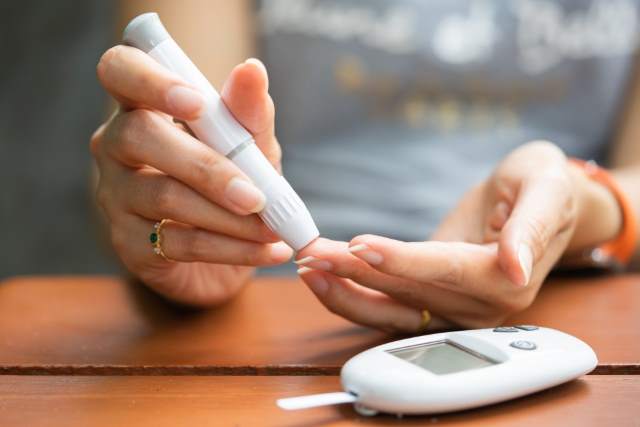Summary Objective: To investigate the association between physician-diagnosed diabetes mellitus (DM) phenotypes and chronic rhinosinusitis (CRS) in a national population-based study. Design: Retrospective cross-sectional study. Population survey data were collected by the Korea National Health and Nutrition Survey between January 2008 and December 2012. Methods: A total of 34,670 participants aged 19 years and older were enrolled in the Korean National Health and Nutrition Examination Surveys from 2008 to 2012. The relationship of the prevalence of CRS, with and without nasal polyps, with physician-diagnosed DM and non-DM was evaluated. In this cross-sectional study, the differences in sinonasal symptoms between patients with and without DM were analyzed. Results: A significant association was observed between DM and CRS with nasal polyps after adjusting for multiple variables. No substantial association was observed between DM and CRS without nasal polyps. Among CRS patients, olfactory dysfunction for >3 months was significantly more frequent in the DM group than in the non-DM group. Conclusion: We demonstrated significant associations between DM and CRS with nasal polyps and olfactory dysfunction among patients with CRS in a large national clinical cohort study. The direct mechanism of the association between DM and CRS with nasal polyps needs to be further investigated to clarify the pathogenesis of CRS with nasal polyps. |
Comments
Patients with diabetes mellitus (DM) may be at increased risk of developing chronic rhinosinusitis (CRS) with nasal polyps (CRSwNP) and subsequent olfactory dysfunction, according to study findings published in Clinical Otolaryngology.
CRS affects 5% to 10% of people worldwide and has been associated with severe sinonasal symptoms as well as substantial social and economic burden. In particular, CRS is classified into 2 phenotypes, CRSwNP and CRS without nasal polyps (CRSsNP), in which the increase in T helper (Th) 2 and Th17 cells found in people with nasal polyps is considered to cause respiratory diseases.
“There is clinical evidence of an association between DM and respiratory tract infections; However, a causal relationship has not been established,” the researchers noted. "Patients with DM are known to be generally more vulnerable to infections, and DM may increase the inflammatory features of sinonasal disease."
To determine the association between DM and CRS phenotypes, they conducted a retrospective cross-sectional study of population-based data derived from the Korean National Health and Nutrition Survey between January 2008 and December 2012 (N = 34,670).
Participants older than 19 years were examined on the relationship of the prevalence of CRS, with and without nasal polyps, with physician-diagnosed DM and without DM. In addition, differences in sinonasal symptoms between patients with and without DM were analyzed.
In the analysis, there were 2608 (mean [SD] age, 60.71 [0.33]) patients in the DM group and 29262 (mean [SD] age, 43.95 [0.17]) patients in the DM group without DM.
It was indicated that the prevalence of CRSwNP was significantly higher in the DM group than in the non-DM group (3.90% vs. 2.57%; OR, 1.538; 95% CI, 1.136-2.082; P = 0.005) , while no significant differences in the prevalence of CRSsNP were found between the group with DM and the group without DM (3.30 vs. 3.70%; OR, 0.887; 95% CI, 0.649-1.212; p = 0.452).
After adjusting for possible confounding factors, multiple logistic regression analyzes showed a significant association between DM and CRSwNP in 3 models, without a significant association between DM and CRSsNP in any of the models evaluated:
- Model 1 : adjusted for sex, smoking and excessive alcohol consumption.
- Model 2 : adjusted for sex, smoking, excessive alcohol consumption, family income, and residence.
- Model 3 : adjusted for sex, smoking, excessive alcohol consumption, family income, residence, stroke, hypertension, bronchial asthma, dyslipidemia, and pulmonary tuberculosis.
Furthermore, it was indicated that olfactory dysfunction that persisted for more than 3 months was significantly more frequent in the DM group than in the non-DM group (OR, 1.796; 95% CI, 1.082-2.982; p = 0.023).
The researchers concluded that further research is needed to determine the direct mechanism of the association between DM and CRSwNP to clarify the pathogenesis of CRSwNP.
Reference
Nam JS, Roh YH, Kim J et al. Association between diabetes mellitus and chronic rhinosinusitis with nasal polyps: a population-based cross-sectional study. Clin Otolaryngol. Published online November 1, 2021. doi:10.1111/coa.13884
















